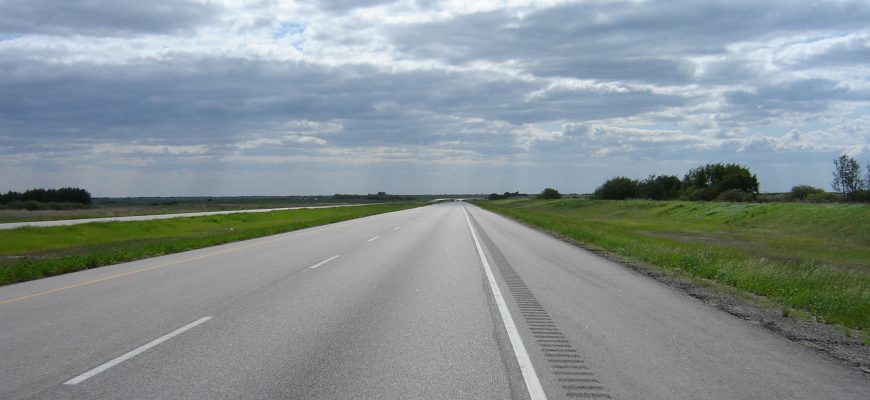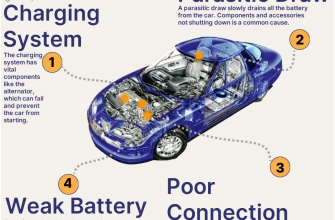The shoulder of the road is often overlooked, yet it plays a crucial role in the safety and functionality of our transportation systems. This seemingly mundane strip of land serves multiple purposes, ensuring that our roadways are not only efficient but also safe for all users.
- What is the Shoulder of the Road?
- Importance of the Road Shoulder
- Functionality of the Shoulder
- Design Considerations
- The Road Ahead: Envisioning Future Innovations for Road Shoulders
- 1. Smart Shoulders
- 2. Multi-Use Spaces
- 3. Eco-Friendly Materials
- 4. Enhanced Visibility and Lighting
- 5. Regular Maintenance and Upkeep
- The Road Shoulders of Tomorrow
- Challenges and Considerations for Road Shoulders
- Maintenance and Upkeep
- Policy and Planning
- Community Engagement and Public Awareness
- The Role of Technology
What is the Shoulder of the Road?
The shoulder of the road refers to the strip of land that runs parallel to the traveled portion of a roadway. It is typically unpaved or paved with gravel and is designed to provide a space for vehicles to pull over, as well as to enhance safety by separating traffic from the roadside.
Importance of the Road Shoulder
- Safety Buffer: The shoulder acts as a buffer between moving vehicles and pedestrians or cyclists. This separation reduces the risk of accidents.
- Emergency Stopping Area: In case of vehicle breakdowns or emergencies, the shoulder provides a safe area for drivers to stop without obstructing traffic.
- Support for Road Maintenance: Shoulders provide essential access for maintenance crews and emergency responders, facilitating timely repairs and responses.
- Drainage: Properly designed shoulders help with surface water drainage, reducing the risk of flooding and keeping the roadway safe to drive on.
- Wildlife Habitat: In rural areas, road shoulders can serve as habitats for local wildlife, contributing to biodiversity.
Functionality of the Shoulder
Besides safety, the shoulder of the road also enhances traffic flow. When drivers are allowed to pull over in cases of emergency, it prevents traffic jams and promotes a more efficient travel experience. Furthermore, shoulders can also accommodate cyclists and pedestrians in some areas, emphasizing the need for multi-modal transportation solutions.
Design Considerations
When designing roadways, engineers must consider the width, surface material, and slope of the shoulder. A well-designed shoulder should be wide enough to accommodate vehicles and have a stable surface to prevent accidents. Additionally, it should be sloped appropriately to facilitate drainage, ensuring that water does not pool and create hazards.
The Road Ahead: Envisioning Future Innovations for Road Shoulders
As urbanization accelerates and traffic volumes rise, the role of road shoulders in our infrastructure becomes even more significant. Moving forward, we must consider innovative approaches to enhance their functionality and safety. Here are a few forward-thinking concepts that can reshape our understanding of road shoulders:
1. Smart Shoulders
Imagine a shoulder equipped with smart technology that communicates with vehicles and traffic management systems. Smart shoulders could feature embedded sensors to monitor traffic flow, weather conditions, and even the structural integrity of the road itself. By collecting real-time data, these shoulders could provide valuable insights for traffic management, helping to alleviate congestion and improve safety.
2. Multi-Use Spaces
In many urban environments, space is at a premium. Road shoulders could be reimagined as multi-use spaces that accommodate not only emergency stops but also recreational activities. Designated lanes for cyclists and pedestrians could be integrated into the shoulder, fostering a more inclusive transportation environment. Parks, green spaces, or even outdoor art installations could flourish, transforming these often dull strips into vibrant community assets.
3. Eco-Friendly Materials
As sustainability becomes a priority in infrastructure development, the materials used for road shoulders will evolve. Eco-friendly alternatives, such as recycled materials and permeable pavement, can be utilized to enhance drainage, reduce heat island effects, and support local ecosystems. This not only ensures the longevity of the infrastructure but also contributes positively to the environment.
4. Enhanced Visibility and Lighting
The visibility of road shoulders is paramount for safety, especially at night or in adverse weather conditions. Implementing innovative lighting solutions, such as solar-powered LED lights embedded along the shoulder, could significantly improve visibility. These lights could be designed to change colors or patterns to signal various conditions, such as construction zones or emergency situations, enhancing driver awareness and responsiveness.
5. Regular Maintenance and Upkeep
To maximize the benefits of road shoulders, regular maintenance is essential. Implementing a systematic approach to shoulder upkeep, including routine inspections and timely repairs, can prevent larger issues from arising. Utilizing drones and automated machinery for inspections can streamline this process, making it more efficient and effective. By prioritizing maintenance, we not only ensure safety but also extend the lifespan of our infrastructure.
The Road Shoulders of Tomorrow
As we look to the future, it’s clear that road shoulders will remain a vital aspect of our transportation networks. By embracing innovation and sustainability, we can enhance their functionality, safety, and aesthetic appeal. The evolution of road shoulders represents not just a response to current challenges but a proactive step toward creating a more efficient, safer, and more integrated transportation system. As communities continue to grow and change, so too must our approach to the infrastructure that supports them.
In this journey towards improvement, we must engage with stakeholders, including engineers, urban planners, and the public, to ensure that the future of road shoulders meets the diverse needs of all road users. Together, let’s pave the way for a safer and more efficient tomorrow.
Challenges and Considerations for Road Shoulders
Despite their importance, road shoulders are often neglected in terms of maintenance and design. Budget constraints can lead to compromises in shoulder construction, resulting in inadequate space or improper materials that fail to serve their intended purpose. Additionally, urban sprawl and increased vehicle traffic put pressure on these critical areas, calling for a reevaluation of how we plan and implement road infrastructure.
Maintenance and Upkeep
Regular maintenance is key to ensuring that road shoulders remain effective and safe. This includes clearing debris, re-establishing proper drainage, and repairing any damage caused by weather or traffic. Communities must prioritize funding for shoulder upkeep, recognizing that a well-maintained shoulder can prevent accidents and save lives. Innovative approaches, such as community-led clean-up initiatives or partnerships with local businesses, can also foster a culture of care and responsibility for our public spaces.
Policy and Planning
Effective policy-making is essential for integrating road shoulder considerations into broader transportation planning. This can involve revising zoning laws, implementing road design standards that prioritize shoulder space, and engaging with public stakeholders to ensure that community needs are met. As cities evolve, so too must the strategies we employ to create safe and effective transportation networks. Policies should reflect the growing need for multi-modal transportation, where road shoulders serve not just vehicles but also pedestrians and cyclists.
Community Engagement and Public Awareness
Public engagement plays a vital role in understanding and advocating for the importance of road shoulders. Community awareness campaigns can educate residents about the multifaceted benefits of these spaces, from safety to ecological preservation. Engaging local schools, civic groups, and organizations in discussions about road safety can also promote a culture of vigilance and responsibility. When communities recognize the value of their road shoulders, they are more likely to support initiatives aimed at improving them.
The Role of Technology
Advancements in technology can also enhance our approach to road shoulder management. Geographic Information Systems (GIS) can be used to analyze traffic patterns, identify high-risk areas, and inform maintenance schedules. Moreover, smart transportation systems can integrate real-time data about vehicle breakdowns or accidents, prompting timely responses from emergency services. Such technological integration not only enhances safety but also optimizes the use of resources in managing road infrastructure.
The shoulder of the road may seem like a small component of our transportation infrastructure, but its impact is profound. As we move toward a future that prioritizes safety, efficiency, and sustainability, we must pay closer attention to these often-overlooked spaces. From urban planning to community engagement, a collective effort is needed to ensure that road shoulders are designed, maintained, and utilized effectively.
In a world where transportation is increasingly complex, the humble road shoulder stands as a reminder of the foundational elements that support safe travel. Let us advocate for its recognition, support its improvement, and embrace the role it plays in our daily lives. The road ahead is not just about the lanes we drive on but also the safe spaces we create along the way.










This article sheds light on the often ignored importance of road shoulders. It
I love how this article emphasizes road safety for all users, including cyclists and pedestrians. A must-read for everyone!
This piece really opened my eyes to the functionality of road shoulders. They are more than just an afterthought; they are essential!
I never realized how crucial the shoulder of the road is until reading this. Great insights into its multiple functions!
Such an informative piece! The role of shoulders in emergency situations is something we should all be aware of.
Fantastic read! I appreciate how it highlights both safety and environmental aspects of road shoulders. Very well done!
Great article! It’s important to recognize the support role that road shoulders play for maintenance crews and emergency responders.